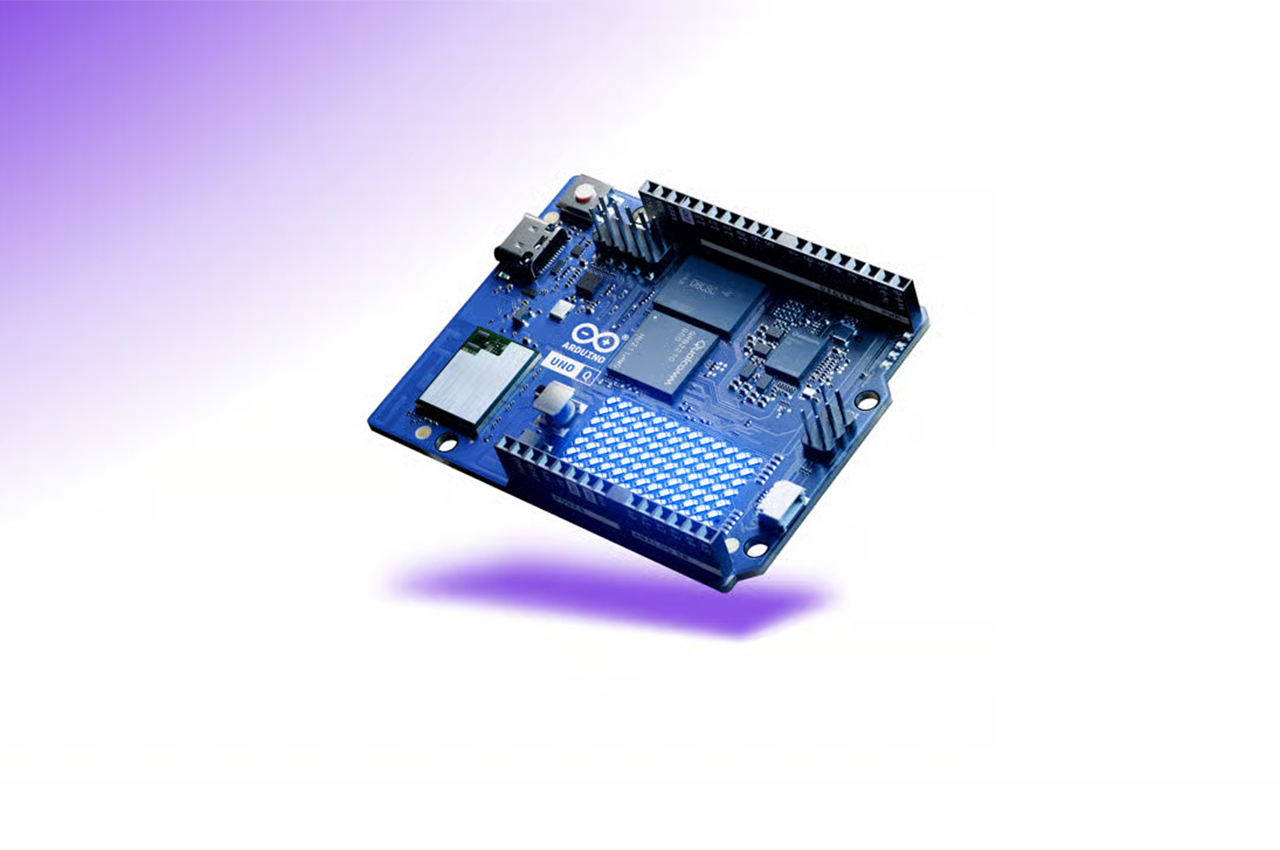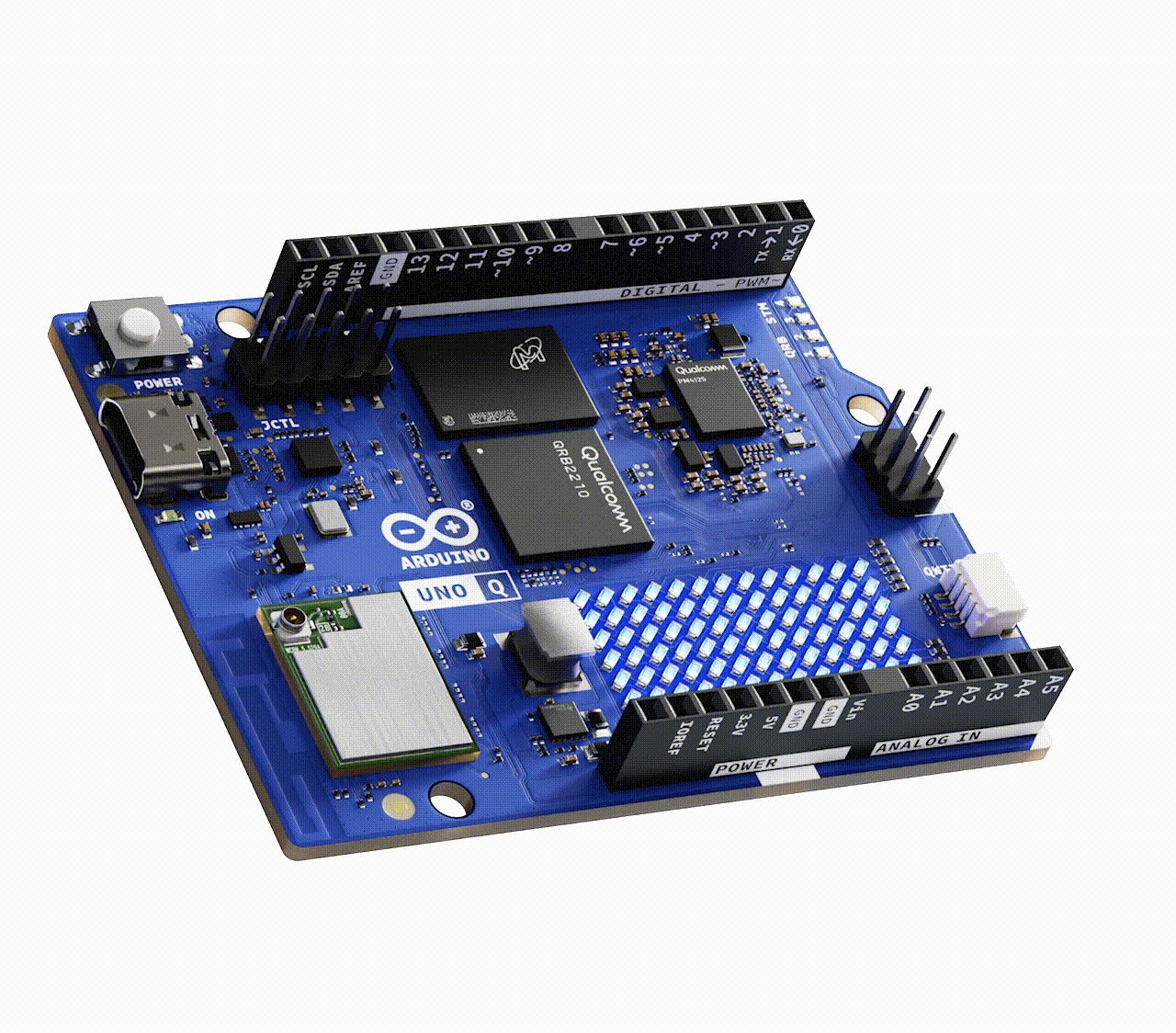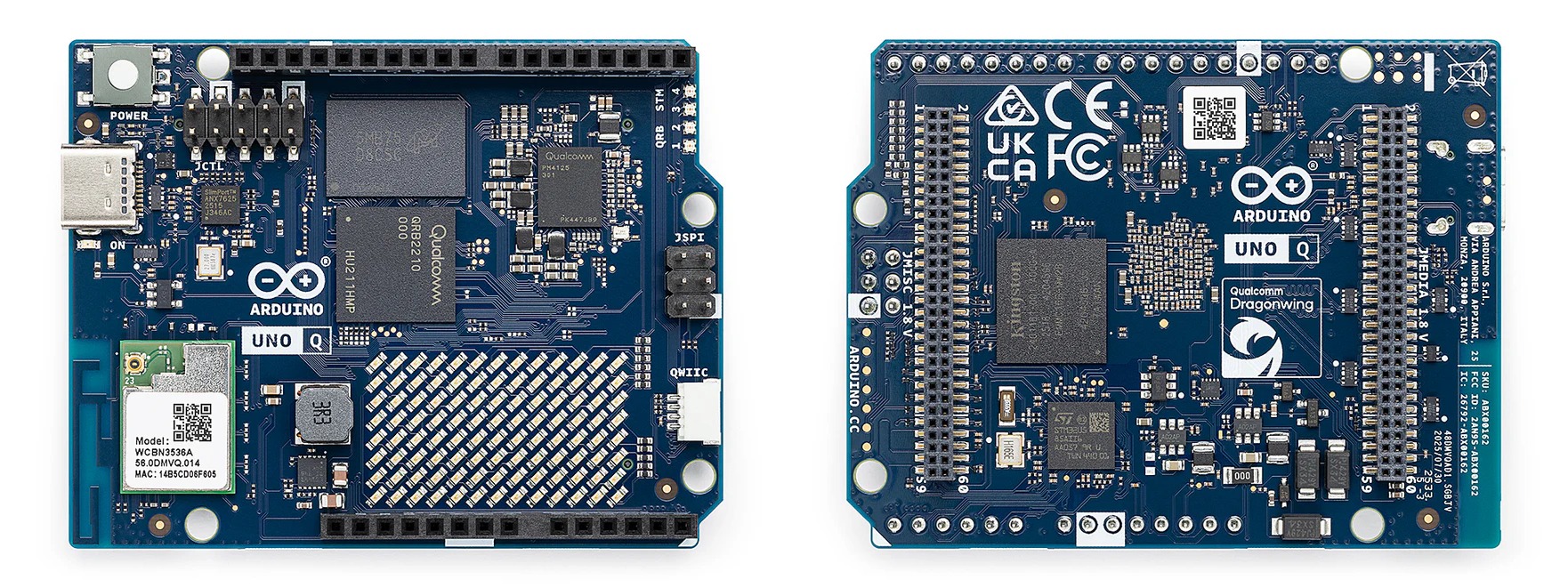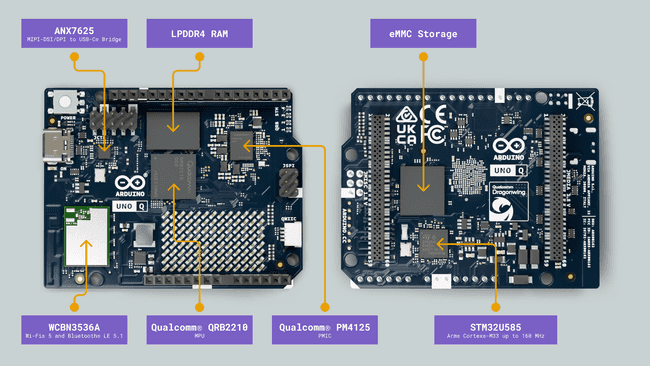The Arduino UNO Q represents a leap forward in embedded development, merging powerful Linux computing with real-time microcontroller control. They describe it as “the all-in-one toolbox,” a hybrid board that enables makers, educators, and professionals to build complex, interactive systems without the hassle of juggling separate components.
Architecture and Capabilities
The UNO Q is a system with a Qualcomm Dragonwing QRB2220 MPU (microprocessor) at its core as a high-performance processor and an STM32U585 MCU (microcontroller) as a real-time controller. The Dragonwing chip provides a 2.0 GHz quad-core CPU, Adreno graphics, and image signal processors (ISPs), with AI, vision, and multimedia capabilities. In the meantime, deterministic I/O, timing, as well as control are managed on the STM32 end.
Arduino UNO Q with Linux microcontroller front and Back side
There is also an integrated 16 GB eMMC storage, dual-band Wi-Fi 5, Bluetooth 5.1, USB-C power/data, a Qwiac connector to expand easily and an LED matrix + RGB LEDs as visual feedback. Its pinout is compatible with the traditional Arduino shields and maintains the ecosystem. Pinout diagrams, datasheets, schematics, CAD and STEP files, along with tutorials for both beginners and advanced users, are available on the documentation website.
Arduino UNO Q’s main components
Software and Development Experience
UNO Q comes preloaded with Arduino App Lab, a unified development environment that allows users to mix Arduino sketches, Python scripts, and containerised AI models, all on one board. Connecting a keyboard, mouse, and monitor makes the board work like a complete computer by itself. Instead, you can also work on it from a PC using a USB-C cable or through the network.
While the UNO Q optimises the App Lab experience, it also maintains an open and flexible design. You can still write and upload sketches by tapping directly into the MCU subsystem using either the CLI or Arduino IDE.
Arduino App Lab Edit and Launching
Use Cases and Positioning
UNO Q is ideal for projects that demand both high-level computing (vision, AI, data processing) and low-level real-time control (sensors, actuators, robotics). It bridges the gap between microcontroller boards and full Linux SBCs (single board computers). Compared to purely MCU-based boards (like the UNO R4), UNO Q offers richer capabilities, though with greater complexity and power demands.
Uncovering and Availability
Following the ideas of Arduino, the design plans and Gerber files are shared under a CC-BY-SA 4.0 license. The Arduino UNO Q costs $44 USD internationally, €47.60 in Europe, and approximately ₹4,699 in India. It’s currently available for pre-order on the official Arduino Store, with shipments expected soon through distributors like RS Components, DigiKey, Mouser, and Robu (India), which lists tentative shipping from October 24, 2025. The product page and press release provide additional details.




